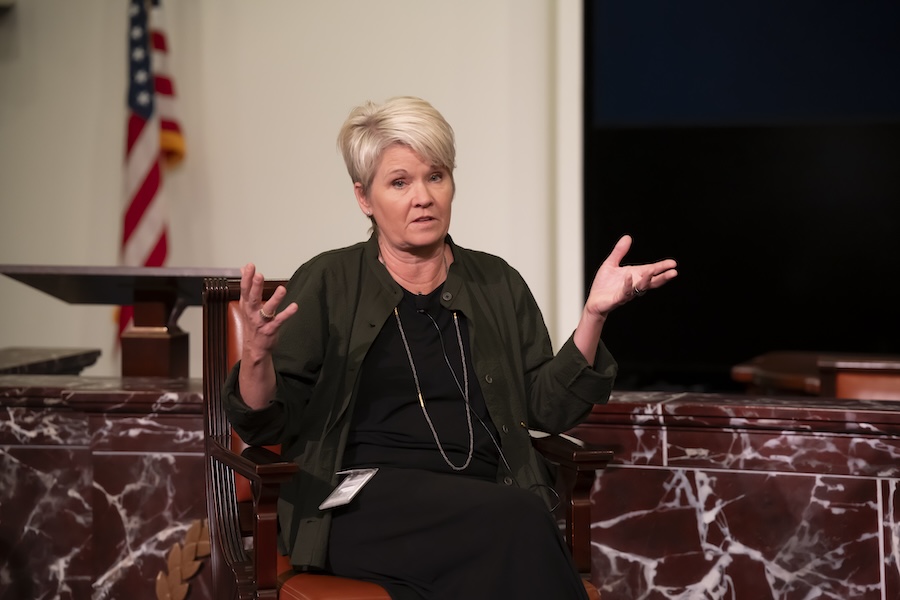Efficiency and Worker Happiness: How to Find a Middle Ground


Dialogue is essential when addressing people-management challenges and sustaining a positive corporate culture, says Ginger Gregory, Ph.D., executive vice president and chief human resource officer of Biogen. “Treat people like adults, measure them on their outcome, [connect them in the office] sometimes, and let managers manage their own teams,” she said in a fireside chat moderated by Callum Borchers of the Wall Street Journal at From Day One’s Boston conference.
Gregory encourages managers to make the right decisions for their teams, especially within a company that spans diverse roles, from frontline lab work to corporate positions. This reflects a more nuanced view on fairness, where fair no longer means the same for everyone. “We have people working labs, we have people working manufacturing, who have to be in the facilities,” she said. “We do manage it based on the role first, but those roles with more flexibility we encourage it. If you don’t treat people like adults, engagement drops,” she said.
Biogen’s engagement hinges on its mission, in that it creates life-saving therapies, a process that sometimes takes years, and, due to the nature of the process itself, some products might not reach the finish line.
“We’re very mission driven. Often, employees can see [patients] and see how products are developing,” said Gregory. This enables workers to see how their efforts directly contribute to meaningful outcomes and the impact they’re making. “We’re a team, and in the last 12 months we launched three new products. We’re keeping the patient story front and center.”
For example, they offer products for muscular atrophy and multiple sclerosis, and they make it a priority to understand life from a patient’s perspective—not only in their daily work but also in what patients experience beyond the workplace, says Gregory.

A similar approach has positively impacted retention as well, which Gregory attributes to HR's specialized training. “When I started in this career, it was when McKinsey’s War for Talent paper came out: how do we develop talent? How do we get managers to care?” she said. At Biogen, managers are walked through conversations centered on thriving, both for themselves and for their direct reports.
“Managers are getting much better at engaging in dialogues with people,” she said. Part of this effort involves orbit programs, where an employee tries out a slightly different function for a set amount of time. “That’s a short way we can get people to try out different things; managers need to know what people want, but they also have to be open to what happens,” said Gregory.
Diversity, equity, and inclusion also remain a core value at Biogen. The company has stood firm on its beliefs and practices. “We haven’t rolled back anything. When I came to Biogen, we were already quite advanced, we had employee network groups, community labs, and more,” she said. “We have not changed our approach: inclusion is part of our cultural essential, and we have the backing of our Board and CEO, we believe it’s going to help us be higher performers.”
Ultimately, the work being done at Biogen not only fosters a strong internal culture but also enhances the company’s overall mission. By prioritizing open dialogue and understanding the patient experience, Biogen reinforces the value of each employee’s contribution, creating a workplace where individuals feel valued and engaged. This alignment of purpose both inside and outside the company ensures that every effort is directed towards achieving meaningful impact in the lives of patients and the broader community.
Angelica Frey is a writer and a translator based in Boston and Milan.
The From Day One Newsletter is a monthly roundup of articles, features, and editorials on innovative ways for companies to forge stronger relationships with their employees, customers, and communities.